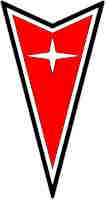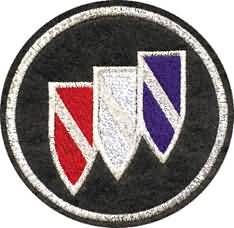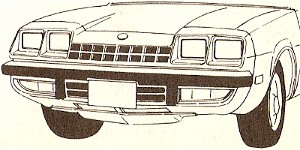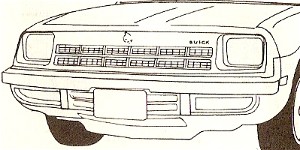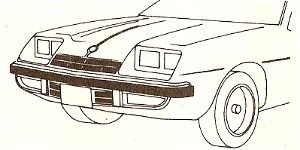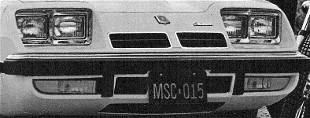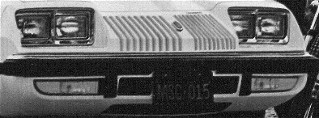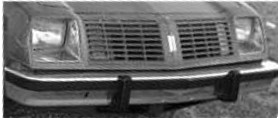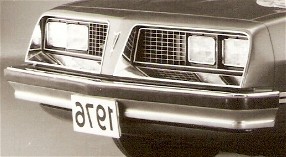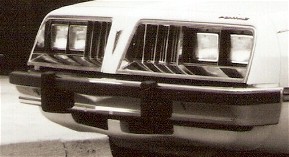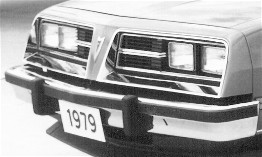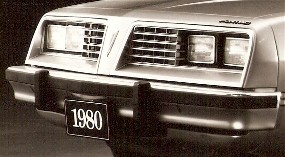THE HISTORY OF THE
Buick Skyhawk,
Oldsmobile Starfire,
Pontiac Sunbird
H-BODY PAGE
Buick, Oldsmobile, and a year later Pontiac, decided to jump in on the H-Body and offer up their own versions using the Monza as a basic platform to makes division-specific changes and additions to. 1975 saw the Vega-styled dashpad standard on all 3 models and was replaced with the 75 Monza Towne Coupe-styled dashpad for 1976 and remained constant till the end of production in 1980. 1976 saw the introduction of an optional 5-speed overdrive manual transmission which was available till 1979, 4-speed manual and 3-speed automatics were standard for all 6 years. Below is a division specific breakdown of each of these models.
BUICK SKYHAWK
1975 Buick launched it's H-Body the same way Chevrolet did, with a 2+2 Hatchback which was essentially a Monza with Buick badging and emblems. Buick even used the same grill openings for its '75 as the Monza. The Skyhawk was offered with only Buick's 3.8L odd-fire V6 engine, and remained all-Buick, the only engine option the Skyhawk was ever offered with throughout the 6-year model run. Skyhawks were sold as 2 models, 4S07 and 4T07 with the T07 models being the bare bones 'S' Skyhawk while the S07 was offered with slightly more standard features. This would remain constant throughout the model run.
1976 saw a new, and totally unique option added to any car, let alone a Buick. The introduction of a glass roof, called an Astroroof by Buick engineers. It was given an RPO Code of C06 and is, by far, the rarest option for the Skyhawk. The Astroroof also came with a thick aluminum 'targa' band than ran across the roof from passenger to driver's side, just behind the door frame and glass roof. Buick also introduced a Hawk Accent decor package which was a tasteful addition of striping and hawk decals. The 1976 Buick Century was the Indianapolic 500 Pace Car with a bold graphics package and Buick offered similar decor packages on various models, including the Skyhawk which was called the Free Spirit. A little known decal package that featured bold, colourful and wide decals on a silver Skyhawk. '76 also saw the introduction of a 5-speed manual transmission available as an option.
1977 saw the introduction of a bold new look for the Skyhawk as well as a stunning new appearance package. The front end still included the quad-headlight front facia but with a new 'egg-crate' grill between the headlights and each light was housed in it's own body coloured opening. The Free Spirit Skyhawk remained available but a new special edition was called the Nighthawk and featured dynamic reflective decals and unique wheel covers. Part-way through the model year Buick introduced a smoother running and idling even-fire 231ci V6 engine to replace it's odd-fire model.
1978 continued with the same 'egg-crate' grill but the Nighthawk edition was to become a one-year only option, and a rare one at that. Otherwise, '78 Skyhawk's remained virtually unchanged from the '77 model year.
1979 introduced 2 new special packages for the, again, totally redesigned front end Skyhawk. The packages were the Road Hawk and the Designers' Accent Edition. The newest front end saw the number of lights halved to 2, larger rectangular headlights that sandwiched a larger, more open grill with a new hood to complete the package. The lower front facia remained untouched from the '75 model.
1980 saw few changes, and Skyhawk production was ceased after just over 8,000 units to complete extended production runs on the Monza and Sunbird into the fall of 1980. The only noticable changes to the 1980 Skyhawk was a beefier-looking horn button for it's sport steering wheel and the deletion of the 5-speed transmission from the option list. The Designers' Accent Edition and Road Hawk were still available for the 1980 model year.
75-76 Skyhawk front facia
79-80 Skyhawk front facia
77-78 Skyhawk front facia
75-76 Starfire
79-80 Starfire
77-78 Starfire
1976
1979
1980
1978
1977
OLDSMOBILE STARFIRE
1975 Oldsmobile also went the route of the Skyhawk, coming out with a 2+2 Hatchback that differed little from the Monza, except for it's badging. Olds did make one unique change, something that Buick did not, and used a distinctive Oldsmobile grill opening, replacing the long rectagular opening found on the Monza and Skyhawk with 2 smaller rectangular openings for air passage to the radiator. 1975 Starfires could only be ordered with Buick's 3.8 V6 engine, a 3-speed automatic or 4-speed manual transmission and featured 4-spoke body-colour 'Super Stock' steel wheels with bright trim rings and centre caps. 2 models of Starfire could be ordered, 3T07 Starfire and 3D07 Starfire SX. The T07 was the bare bones model while D07 included extra standard features. This remained constant throughout the model run. Midway through the model year a bold new special edition called the GT was added. The GT was to become the only special edition package available on any 2nd generation H-Body for every year of production.
1976 saw just minor changes to the Starfire. Two different wheel covers were added to the standard Super Stock rims (which also featured Chrome paint for the GT option) and a 5-speed manual Borg-Warner transmission became available.
1977 was a year of big change for the Starfire. The front grill was totally redesigned to reflect the Olds "waterfall" design found on all Oldsmobiles that year but still included the quad-rectangular headlight system. The standard engine was now Pontiac's 2.5L 'Iron Duke' with the 3.8 Buick as an optional upgrade.
1978 saw more changes, including a serious upgrade in under-hood performance. Chevy's 305ci, 5.0L V8 was added to the existing lineup of the 'Iron Duke' and the Buick 3.8. 1978 also saw the emergence of Starfire's top-of-the-line package, the Firenza, which was available late in the model year and continued as an option till the end of Starfire production in 1980.
1979 saw yet another major front grill redesign. The standard 'waterfall' grill was revamped and was now sandwiched between 2 larger dual rectangular headlights with amber turn-signal lights mounted in behind the grill, not under the front bumper. The hood was also redesigned since the old quad-headlight humpback hood was no longer needed for the dual lighted front end (it featured a less prominant and wider hump profile. The steel 4-spoke 'Super Stock' body coloured or Chromed wheel became, again, the only wheel choice available.
1980 was a year of subtraction rather than change. The last year of production for the Starfire saw the removal of the 305 V8 and the 5-speed transmission from the option list. Due to lagging sales, Starfire production was ended early to accomodate the production and sales of Monza and Sunbird and just over 8,000 Starfires were built for 1980.
PONTIAC SUNBIRD
1976 Pontiac lagged behind it's GM siblings and didn't unleash its rear-wheel drive H-Body, the Sunbird, till the 1976 model year. Unlike Chevrolet, Buick and Oldsmobile, Pontiac launched their initial H-Body in the form of a Coupe, not a Hatchback. The front facia was very Pontiac, in that it had the beak-like look (with Pontiac arrow in the middle) that was so predominantly Pontiac but also sported quad rectangular headlights like it's Monza sibling but featured amber turn-signal/parking lights behind the grill, not below the bumper. Front and rear facias were soft eurethane but bumper, both front and rear were large chrome styles found on the Monza Towne Coupe. Grill pattern featured highlighted horizontal and vertical bars. Pontiac offered the Vega 4 and the 3.8 Buick powerplants for '76.
1977 saw the emergence of the hatchback in Pontiac form late in the model season. The Sunbird Hatchback was very different from the Monza though. The grill was the same used on the Sunbird Coupe but the rear end was also the flat panel style found on the coupe, not the wraparound taillights found on the Monza Sport Hatchbacks. Soft facias were present but with the large chrome bumpers found on the coupe, not the facia covered aluminum bumper framework found on the other H-Body hatchbacks. This would remain constant throughout the Pontiac Sunbird model run. 1977 also saw the emergence of Pontiac's newest L4 engine, the 151ci, 2.5L 'Iron Duke' which boasted 32mpg highway and 24mpg city. Buick's 3.8 returned as the other engine choice in the Sunbird. Pontiac also introduced what they called Rally RTS (Radial Tuned Suspension) Handling Package, with thicker front and rear sway bars and 70 series tires. 1977 also saw the introduction of the Sunbird Formula, a special edition Sunbird with various equipment upgrades and appearance items. Grill openings were highlighted by a new honeycomb pattern.
1978 saw the introducation of yet another body style for Pontiac, the Sunbird Safari Wagon. The Safari Wagon was essentially a Vega Kammback body with a Sunbird front facia and grill openings. Also introduced was a bold striping package called the Wide Body Appearance Package and was available for the next couple seasons. Grill openings were now highlighted by a set of verticle bars.
1979 grill openings were highlighted by a set of double horizontal bars in the middle of the grill. Available models included the base Sunbird Coupe, better optioned Sport Coupe, Sunbird Sport Hatchback and Sunbird Sport Safari Wagon
1980 was, like the Skyhawk and Starfire, the final year for the rear-wheel drive Sunbird. The Safari Wagon was dropped from the Pontiac lineup for 1980, as was the 5.0L V8 and 5-speed manual transmission options. Available models included the Coupe, Sport Coupe and Sport Hatchback with a base Hatchback making an appearance later in the model year. The Formula package saw minor appearance changes and was now no longer available on the Sunbird Coupes. The rear spoiler was also eliminated from the coupe's option list. Front grills featured highlighted horizontal bars.

